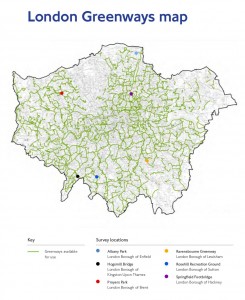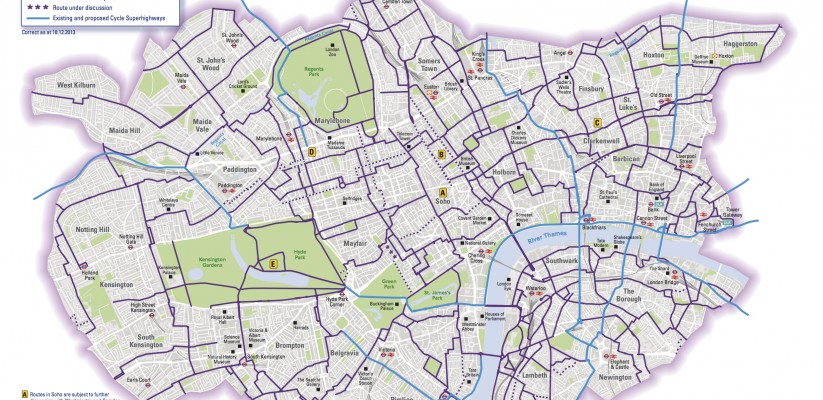Cycling in a Megacity. The Case of London / Graziano Di Gregorio, Simona Palmieri
Cycling in a Megacity. The Case of London / Graziano Di Gregorio, Simona Palmieri. – Pag. 129-150 (24 p.) [formato PDF, 2,9 MB]. Published in: Urban Planning, Public Space and Mobility, Young Planners Workshop 2016, ECTP-CEU, Brussels, 2016, 172 p. [formato PDF, 22,7 MB].
Today, cities around the world are pushing forward their political agenda for more urban cycling as an active mode of transportation. Cycling has been increasingly promoted as an active mode of transportation and Governments at every level have been implementing policies to increase cycle levels within urban centres, to improve the overall sustainability of the transportation system and the liveability of our cities. This paper adopts a wider focus and a deeper understanding of the role of cycling in megacities along with the opportunities and challenges of promoting cycle mobilities in such large urban areas. London is used as an empirical case study in order to investigate how this megacity has implemented its own ‘cycling revolution’. Current and past policies are analysed and supported by examples-of completed and ongoing projects within the city-in order to illustrate how the city is addressing its long-term strategy. The main conclusions drawn from this paper can be delineated in three main factors as key elements in promoting cycling in a megacity.
Fig. 4 – London Cycle Superhighways 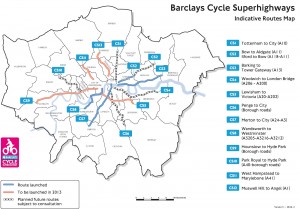
Fig. 6 – North-South Cycle Superhighway. Proposed works, before-after.
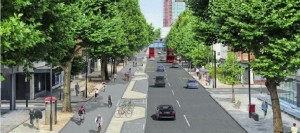
Fig. 7 – The first seven quietways.
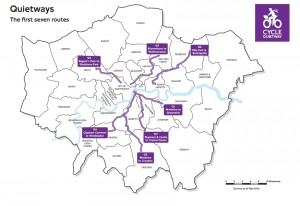
Fig. 9 – Greenways network in London.
